Why Rachel Dolezal Infuriates Us
The more I read about Dolezal and her life in “blackface,” the angrier I got. Here are 10 reasons her critics are on solid ground in denouncing her.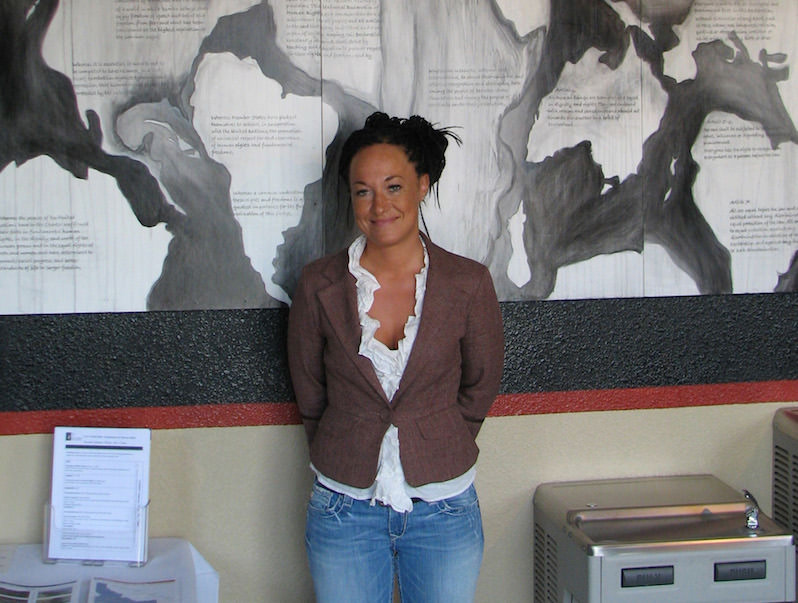 In this 2009 photo, Rachel Dolezal, a leader of the Human Rights Education Institute, stands in front of a mural she painted at the institute's offices in Coeur d'Alene, Idaho. (Nicholas K. Geranios / AP)
In this 2009 photo, Rachel Dolezal, a leader of the Human Rights Education Institute, stands in front of a mural she painted at the institute's offices in Coeur d'Alene, Idaho. (Nicholas K. Geranios / AP)
When the controversy around Rachel Dolezal came to light Friday, I couldn’t help but be struck by her story, and the more I read, the angrier I got. While some in the fight for racial justice see it as a distraction from larger issues like police violence and housing and employment discrimination, many, including myself, view Dolezal’s story as another example of the need for continued vigilance on issues of race and racism. Here’s why:
1. She has undermined the work of racial justice done by countless people of color and particularly African-Americans. By adopting blackness, she gave herself the false authority to speak about the experiences of a person she has never really been. Longtime hip-hop scholar and activist Rosa Clemente told me in an interview on “Uprising” that in her eyes, Dolezal is “a liar, a thief, an ethnic gentrifier” who is “performing in blackface.” Clemente, when she traveled to Spokane to deliver a lecture, had met Dolezal earlier this year.
Dolezal taught courses to—presumably—many students of color at Eastern Washington University, where she was, until earlier this week, an instructor in Africana studies, teaching African and African-American art history, African history, African-American culture, “The Black Woman’s Struggle” and introduction to African studies (Dolezal’s bio, which listed these courses, was just removed from Eastern Washington University’s website after the announcement that her tenure there was over). It is not as though non-blacks never teach such courses. But when they do, they do not pretend to be black, as Dolezal did.
2. She has undermined the work of countless white allies who have risked life and limb in the fight for racial justice, and done so while comfortable in their own skin (and skin color). Adopting the appearance of a black person allowed Dolezal to sidestep the uncomfortable work required of white Americans who see themselves as allies to the cause and have to deal with their own racial privilege. One example is a woman named Mary White Ovington, co-founder of the NAACP and an admirable white ally. Choosing that a path would have made Dolezal a far more valuable activist in the cause of racial justice. Clemente recounted how, during her trip to Spokane, she learned that Dolezal had attempted to keep the white anti-racist activist Tim Wise from speaking at the university simply because he was white. Meanwhile, she hid her own whiteness.
3. She has undermined the struggle of mixed-race people to identify as part of a particular racial or ethnic group. By deceiving a university, an NAACP office and even the newly formed Office of the Police Ombudsman in Spokane, Dolezal has probably made it harder for light-skinned women of color to be accepted for who they are. Clemente, who identifies as Afro-Latina and black, said she feels this story will even make it harder for people like her to explain how and why she considers herself black. She said, “It enrages me that this one person that says she was there to uplift racial justice might have set things back in how we view each other as a global black diaspora.”
4. Her story has inspired dangerous comparisons with the struggle of transgender people. Dolezal’s defenders have compared her with Caitlyn Jenner, the new transgender poster child of the celebrity world. The logic goes that if we accept Bruce Jenner’s transition to Caitlyn Jenner, why can’t we accept Rachel Dolezal’s transition from white to black? Why can’t we accept her as “transblack” or “transracial”? There are many problems with this logic, the most important being that the transgender population has been a visible and enduring part of all human populations, across race, religion and geographical region. It is now a matter of scientific study to determine why some people are born into bodies whose gender they don’t identify with, and why adopting the traits of the gender that they do identify with feels right. There is no such widespread phenomenon, history or culture involving race transitions. There is only Rachel Dolezal. In our interview, Clemente concurred, saying, “It’s a disservice to compare what she has done to the experience of people who are transgender, people who are struggling.”
5. She has used race as a matter of convenience, accepting her whiteness when it suited her. When it was convenient for her to use her white privilege, Dolezal did so, most notably when she sued Howard University, a predominantly black university, alleging what many on the right call “reverse racism.” According to The Washington Post, the lawsuit, filed when she attended Howard as a white student, “claimed retaliation based on her race, gender, pregnancy and family responsibilities, saying she had been denied teaching positions and scholarship aid. She also complained that some of her artwork had been removed from an exhibition because black students were being favored.” The suit was eventually dismissed by a judge.
6. She then pretended to be black in order to reap a disproportionate share of the very few opportunities available to black women. One of Dolezal’s neighbors in Spokane told The New York Times that about five years ago, he literally saw her evolve from a woman who was “blond—dreadlocks down to here and white skin” to “a darker-skinned woman.” Since then, Dolezal obtained several leadership positions as a black woman in the almost all-white city of Spokane, positions that ought to have been reserved for someone who was really black. In a world where African-American women struggle to be heard, taken seriously and validated, Dolezal occupied several valuable and rare spaces.
Right-wing Americans have long complained about what they view as the unfairness of affirmative action. Dolezal took her own affirmative action—as a white person. Except that there is no moral authority when a person who already has privilege uses minority status to gain advantage. Even her adopted brother, Ezra Dolezal, who is actually black, told CNN, “It’s kind of a slap in the face to African-Americans, because she doesn’t know what it’s like to be black. She’s only been African-American when it benefited her. She hasn’t been through all the struggles. She’s only been African-American the last few years.”7. She donned blackface to get what she wanted. Given that Dolezal knew the context of the black struggle for freedom, justice and equality (after all, she taught multiple courses on related subjects), she must have known and understood the offensive American history of blackface. In this interview she said, “I have a huge issue with blackface. This is not some freak ‘Birth of a Nation’ mockery blackface performance.” But, like Clemente, Dolezal’s brother referred to her physical transformation from white to black as “blackface.” Dolezal justifies her darker skin by saying, “I certainly don’t stay out of the sun.”
The closest recent analogy I can think of to what Dolezal did in changing her appearance took place in November 2013, when actress Julianne Hough—for her Halloween costume—darkened her skin and dressed as the character Crazy Eyes from the TV show “Orange Is the New Black.” Hough was rightfully lambasted for employing blackface. At least Hough apologized. Dolezal has remained defiant, continuing to insist that “race is a construct” and that she “identifies as black.” (And by the way, can anyone find an explanation for this bizarre photo?)
8. She imposed her own narrow standards of racial inclusion on others, while privately flouting them for herself. Clemente, who is in touch with Dolezal’s former students, recounted that “[t]hey’ve been told by her on some occasions that they cannot participate in certain things because they are not Hispanic enough or black enough.” She added, “Her students feel duped. …They feel like they’ve been played.”
Clemente also told how Dolezal disagreed with her on the need for solidarity in political struggles. “She questioned Latinos and Latinas being in the Black Lives Matter movement.”
9. She trivialized the seriousness of racism against blacks and people of color. Dolezal reported a large number of hate crimes aimed at her, some during her life as a white woman, but most during her blackface era. Now, Spokane police have suspended all investigations into the allegations. Clemente hesitated to say what many suspect—that in fact Dolezal may have made it all up as part of her elaborate hoax to buy credibility as a black woman. “I think it’s a lot of reporting of a lot of hate crimes for one person,” Clemente told me. Of course, Dolezal may indeed have been the target of hate crimes, because, well, people of color and those perceived to be often are. Her deception has only fueled prevailing societal skepticism of such crimes.
Additionally, in her responses to the media about her race, Dolezal has parroted the very logic that some white Americans use to deny racial injustice, saying, “We’re all from the African continent.” This echoes the infuriating rhetoric of “colorblindness” by those who say, “I don’t see race,” as a way to claim they are not racist.
10. She is likely to continue to reap the benefits of white privilege. Despite being disgraced in progressive circles, she has won the support of celebrities eager to ingratiate themselves with mainstream audiences, such as Kareem Abdul-Jabbar, Raven-Symoné, even Michael Eric Dyson.
Now that she has been outed as white, Dolezal has been invited to share her story with multiple high-profile news outlets. Ironically, she has been afforded access to the very spotlight that has always been more available to white women than to black women. Despite losing her teaching position and stepping down from her NAACP leadership role, in all likelihood Dolezal will not only survive but thrive. She will have her cake and eat it too, by continuing to claim she is black while unapologetically enjoying the fruits of white privilege.
Your support matters…Independent journalism is under threat and overshadowed by heavily funded mainstream media.
You can help level the playing field. Become a member.
Your tax-deductible contribution keeps us digging beneath the headlines to give you thought-provoking, investigative reporting and analysis that unearths what's really happening- without compromise.
Give today to support our courageous, independent journalists.
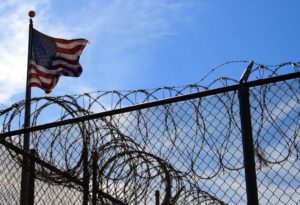
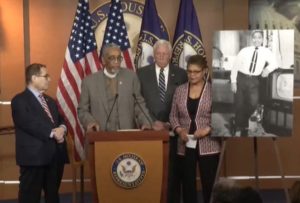

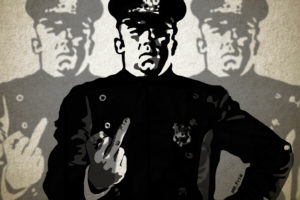
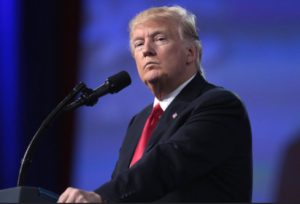
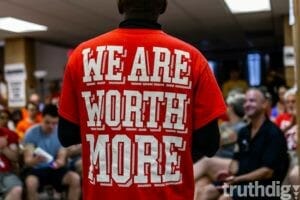
You need to be a supporter to comment.
There are currently no responses to this article.
Be the first to respond.